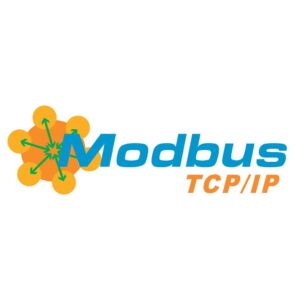How Smart Manufacturing Can Benefit from IoT in Industry 4.0- Part 2 : Modbus
News > Tech Trends > How Smart Manufacturing Can Benefit from IoT in Industry 4.0- Part 2: Modbus

Introduction
In last article, we talked about ”How Smart Manufacturing Can Benefit from IoT in Industry 4.0“. Now we are going to dive into some key technologies that turned traditional manufacturers or automated production lines into Intelligence.
Modbus is a widely used industrial communication protocol that allows data exchange between various types of equipment and systems. Modbus or MODBUS is a client/server data communications protocol in the application layer of the OSI model. It was originally published by Modicon (now Schneider Electric) in 1979 for use with its programmable logic controllers (PLCs).
Modbus has become a de facto standard communication protocol for communication between industrial electronic devices in a wide range of buses and network. It is a widely accepted serial level protocol due to its ease of use and reliability. Modbus RTU is widely used within Building Management Systems (BMS) and Industrial Automation Systems (IAS).
There are two popular variants of Modbus used in industrial networks – Modbus RTU and Modbus TCP/IP. Both these protocols are used for establishing master-slave communication between industrial devices.
In this comprehensive guide, we will take a deep dive into Modbus RTU and Modbus TCP/IP protocols. We will also do a comparative analysis of both protocols to understand when to use Modbus RTU and when to adopt Modbus TCP/IP.



Modbus RTU
Modbus RTU is a relatively simple serial protocol that can be transmitted via traditional UART technology. Data is transmitted in 8-bit bytes, one bit at a time, at baud rates ranging from 1200 bits per second (baud) to 115200 bits per second. The majority of Modbus RTU devices only support speeds up to 38400 bits per second.
A Modbus RTU network has one Master and one or more Slaves. Each slave has a unique 8-bit device address or unit number. Packets sent by the master include the address of the slave the message is intended for. The slave must respond only if its address is recognized and must respond within a certain time period, or the master will call it a “no response” error.
This protocol primarily uses an RS-232 or RS-485 serial interfaces for communications and is supported by every commercial SCADA, HMI, OPC server and data acquisition software program in the marketplace. This makes it very easy to integrate Modbus-compatible equipment into new or existing monitoring and control applications.
Modbus TCP/IP
Modbus TCP/IP uses Ethernet and TCP/IP networks for the implementation of the Modbus protocol over an IP network. Data is encoded in ASCII format and transmitted over TCP/IP.
Modbus TCP encapsulates Modbus RTU request and response data packets in a TCP packet transmitted over standard Ethernet networks. The unit number is still included, and its interpretation varies by application – the unit or slave address is not the primary means of addressing in TCP. The address of most importance here is the IP address. The standard port for Modbus TCP is 502, but port number can often be reassigned if desired.
The TCP version of Modbus follows the OSI Network Reference Model. Modbus TCP defines the presentation and application layers in the OSI model.
Modbus TCP makes the definition of master and slave less obvious because Ethernet allows peer to peer communication. In Modbus terms, this means there can be multiple masters as well as multiple slaves. Rather than defining master and slave on a physical device by device basis, it now becomes the system designer’s responsibility to create logical associations between master and slave functionality.
Comparison of Modbus RTU and Modbus TCP/IP
● Modbus RTU is simpler to implement and less expensive than Modbus TCP/IP.
● Modbus TCP/IP is more flexible and scalable, and can be used over existing Ethernet networks.
● Modbus TCP/IP is faster than Modbus RTU, but has higher latency due to the TCP/IP overhead.
● Modbus TCP/IP requires more security considerations than Modbus RTU.

● Smaller Modbus networks with up to 32 slave devices
● Communication over short distances within a plant or factory premises
● Modbus connectivity for legacy serial devices and applications
● Control networks that require high-speed binary data transfer
● Logical network isolation is needed for security reasons.
● Tightly coupled Modbus systems without remote access requirements
● Budget-sensitive applications due to the lower cost of serial infrastructure

● Modbus TCP/IP is the preferred solution when:
● Integration with existing Ethernet networks is required.
● Modbus connectivity over local and global distances
● Web-based remote monitoring and control capability is needed.
● Interoperation with many Modbus masters and slaves
● Future expandability for a larger number of devices is planned.
● Real-time data historians and software require IP connectivity.
● Centralized Supervisory Control and Data Acquisition (SCADA) systems.
● Regulatory compliance requires cybersecurity measures like VPNs.
Modbus RTU and Modbus TCP/IP are both viable industrial communication protocols with complementary strengths and weaknesses. Modbus RTU provides high-speed binary Modbus connectivity over cost-effective serial networks. Modbus TCP/IP enables integration with enterprise IT systems and internet-based remote access capabilities.
Understanding the key differences in implementation, performance, and security assists in selecting the appropriate protocol. For existing serial networks, Modbus RTU may be adequate. For new large-scale deployments, Modbus TCP’s flexibility and expandability will be beneficial. Hybrid networks using Modbus gateways provide a migration path leveraging the advantages of both technologies.
Read new article
Let's get more info on Smart Manufacturing!

展嘉科技股份有限公司
Your Best Design Partner !




